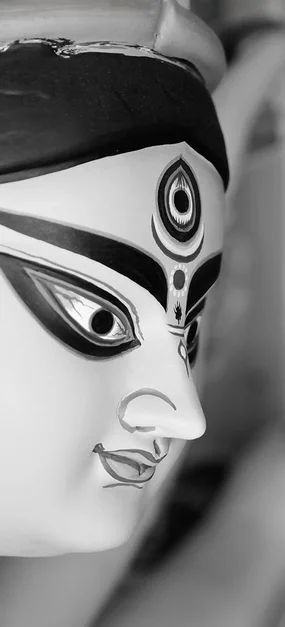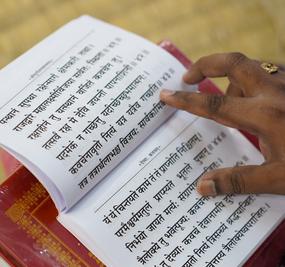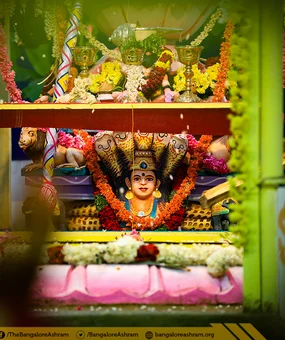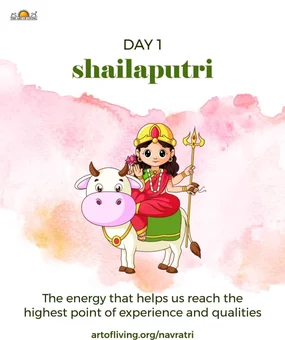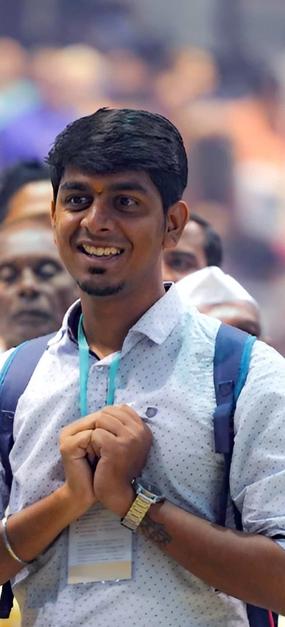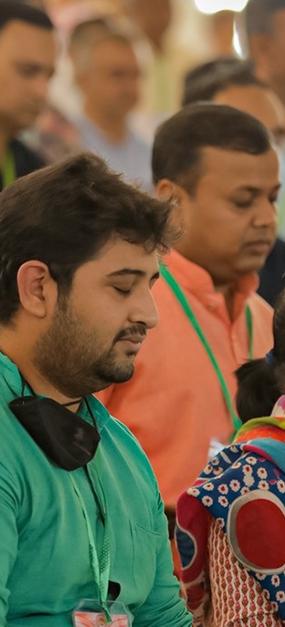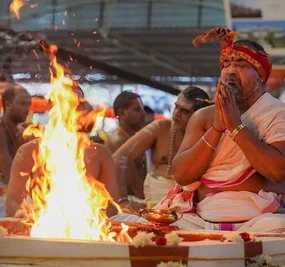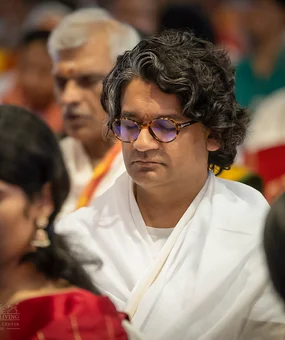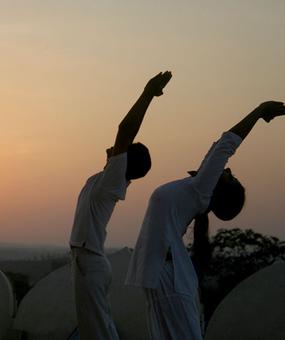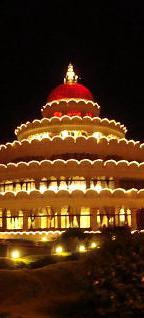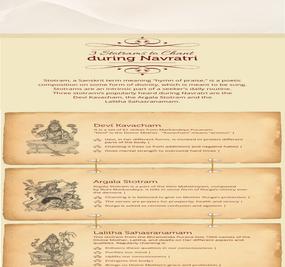In our country, we never separated spirituality from science. Science is a path towards spirituality and spirituality is part of science.
Navratri: Getting back to the Source
‘Nava’ has two meanings- ‘nine’ and also ‘new; and it is an occasion that brings freshness and rejuvenation in our lives as we get back to our source for these nine nights, taking our mind off all the day-to-day botherations, and spend time in self-enquiry. Then we become more creative, you become victorious.
When negative thoughts enter the mind, or when we have moved away from our nature, that’s when we find we get disturbed, we are unpleasant to be around, and we become unproductive and non-creative. And you can find relief from this negativity only when you go to the source of energy within you – the Shakti.
The science behind Navratri: Connecting the Macrocosm with the Microcosm
The story of Raktabeejasura indicates that our qualities are embedded in our DNA. Just as from each drop of the demon, a new demon was born, which means each drop had the makings of the whole demon, who we are, and who we have been-it is all encoded in our DNA. So the transformation has to happen from the very basic level and it is only the Devi who brings this transformation in us. Mother Divine comes with her trident which represents 3 things – wisdom, love and action.
She frees us from the asuras, the negative qualities that are present inside. Even if they are present in our DNA, they will be eliminated by the grace of Mother Divine. So, when you do sadhana or spiritual practices, when the spiritual energy in you is awakened, it sets right your entire physiology, it brings you the right mindset, right thought and the right expression of life. It is not just on the thinking level, it is on the existential level that the transformation occurs.
One in the many
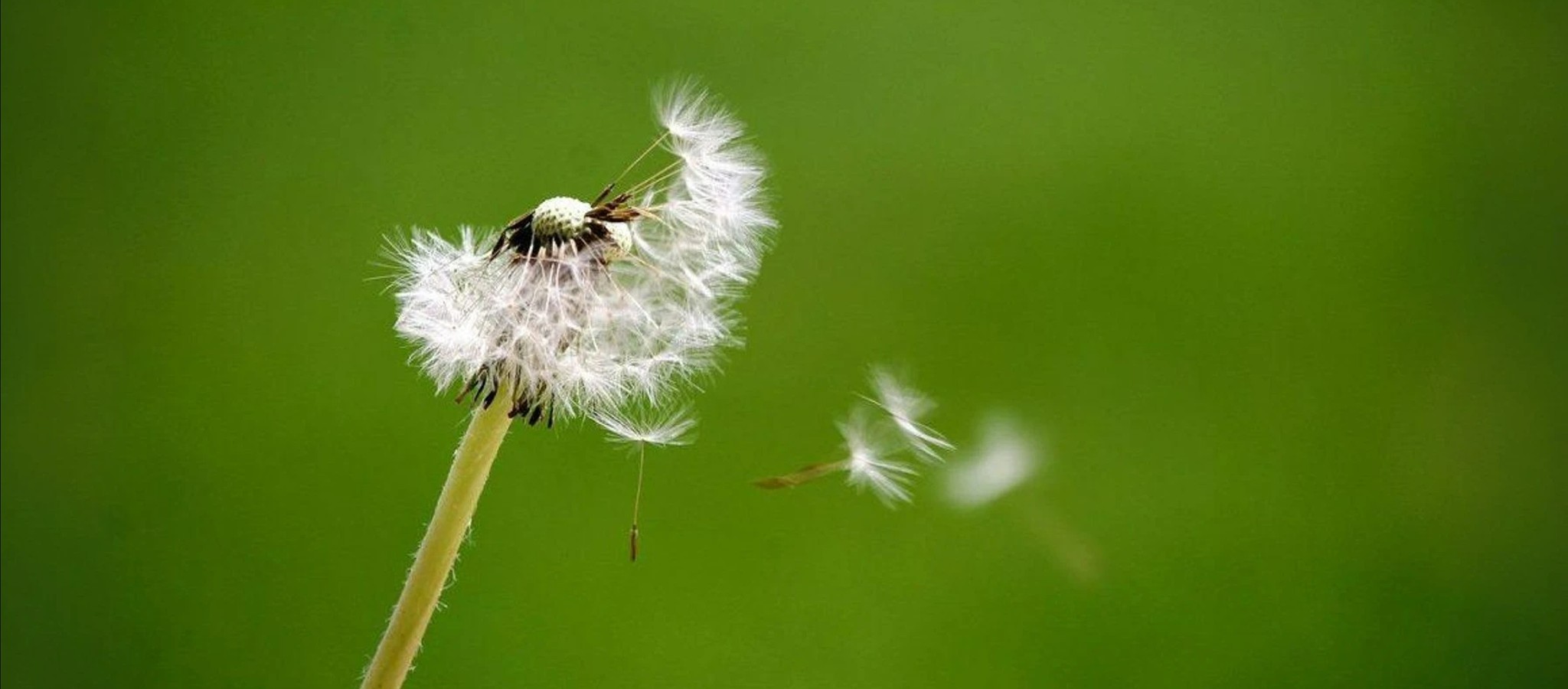
Your mind is a small part of a big mind, your body is a part of the entire existence. If there is some problem in the air, not only one person is going to get affected but everything around will be affected. The environment is our first body, our food is from the environment, that’s why it’s called Annamaya Kosha. Vedanta and quantum mechanics are very close, very similar. Quantum mechanics says this whole universe is just made up of one wave function; Vedanta says the same thing – the whole universe is just vibrations, spandana, and pulsation. And the vibration in its many manifestations has formed this multitude of universe; and that One Vibration has manifested as millions of names and forms. That’s what the verses chanted in Navratri days are about, how the Divine Mother is manifest everywhere – all the qualities are Her; she is present in every atom of this creation, in the animals, trees, insects, galaxies and in many many worlds, and planets. Her glory is spread from an atom to the cosmos. So we adore the Mother Divine in all forms and feel the energy in the Annamaya Kosha.
When you listen to the story of Mother Divine, worship her; then the energy in you wakes up, prana wakes up; then you receive blessings, and all your desires come to you.
-Gurudev Sri Sri Ravi Shankar
So, they cognized elaborate methods to connect the macrocosm with the microcosm; wherein every aspect of life is involved and that is what is called yagya. The yagya here is done for the whole world, for the welfare of all human beings; and the procedures are laid down in the scriptures – How many herbs should be bought? Which materials should be used? What chanting and mantras should be used? It’s all very precise, when it is done in the way it should be done, the impact of it is very imminent.
Our mind is tired of swaying between cravings and aversions, and the right and wrong. Navaratri is the time to just drop everything, and when we drop everything and repose in ourselves then deep meditation, samadhi, happens. That is the basis of all success in life.
Offering all the good and bad qualities; the past, present and the future to the Divine Mother, we repose in ourselves. And that is the essence of Navratri, to give deep rest to our mind and soul.
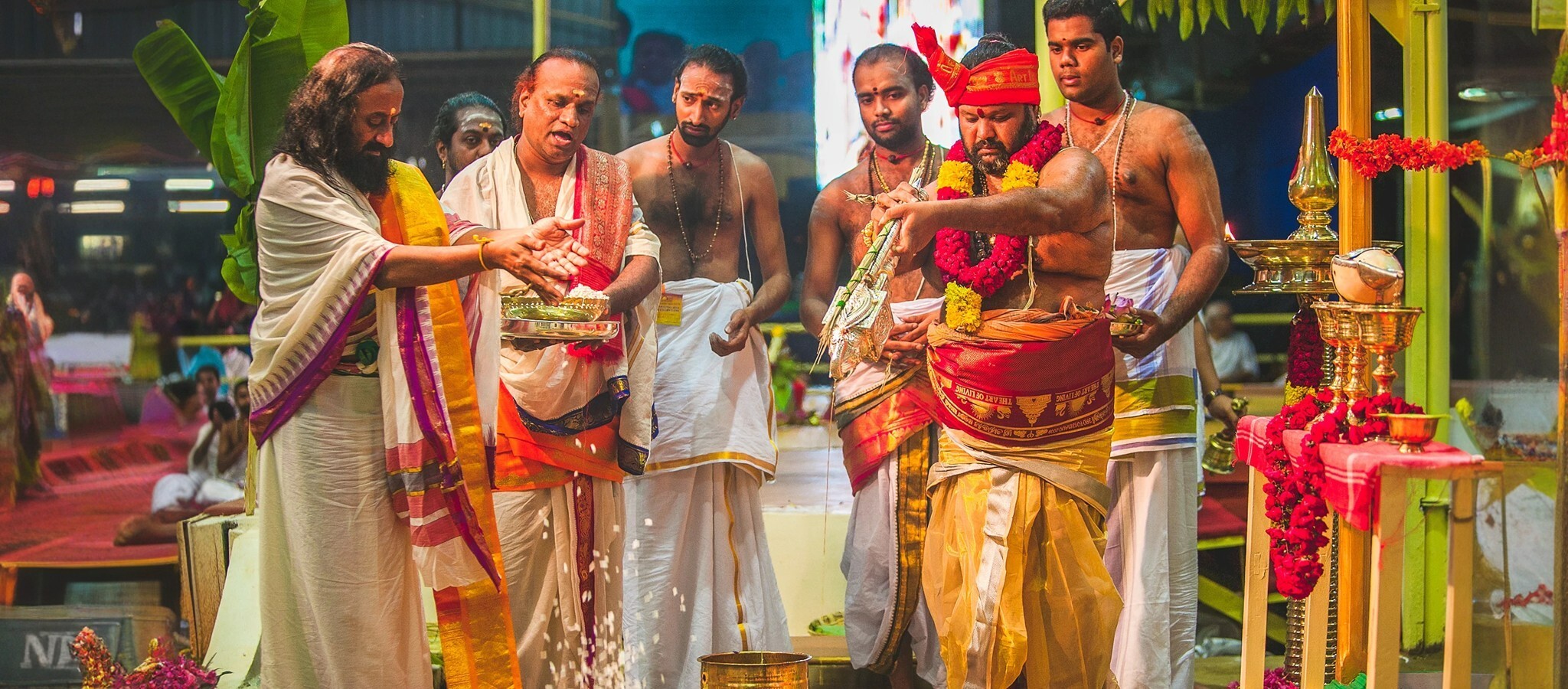
Significance of Rituals: Why Rituals Matter?
A little bit of engaging in rituals focuses the mind and creates a positive and celebrative atmosphere. Every ritual of the ancient people has some sort of significance, it has a specific impact on the environment and the subtle world.
The mantras are chanted with water, and the water absorbs certain vibrations. We have seen experiments on how water crystals respond to your thoughts. Every single thought you have has an impact on the cosmos.
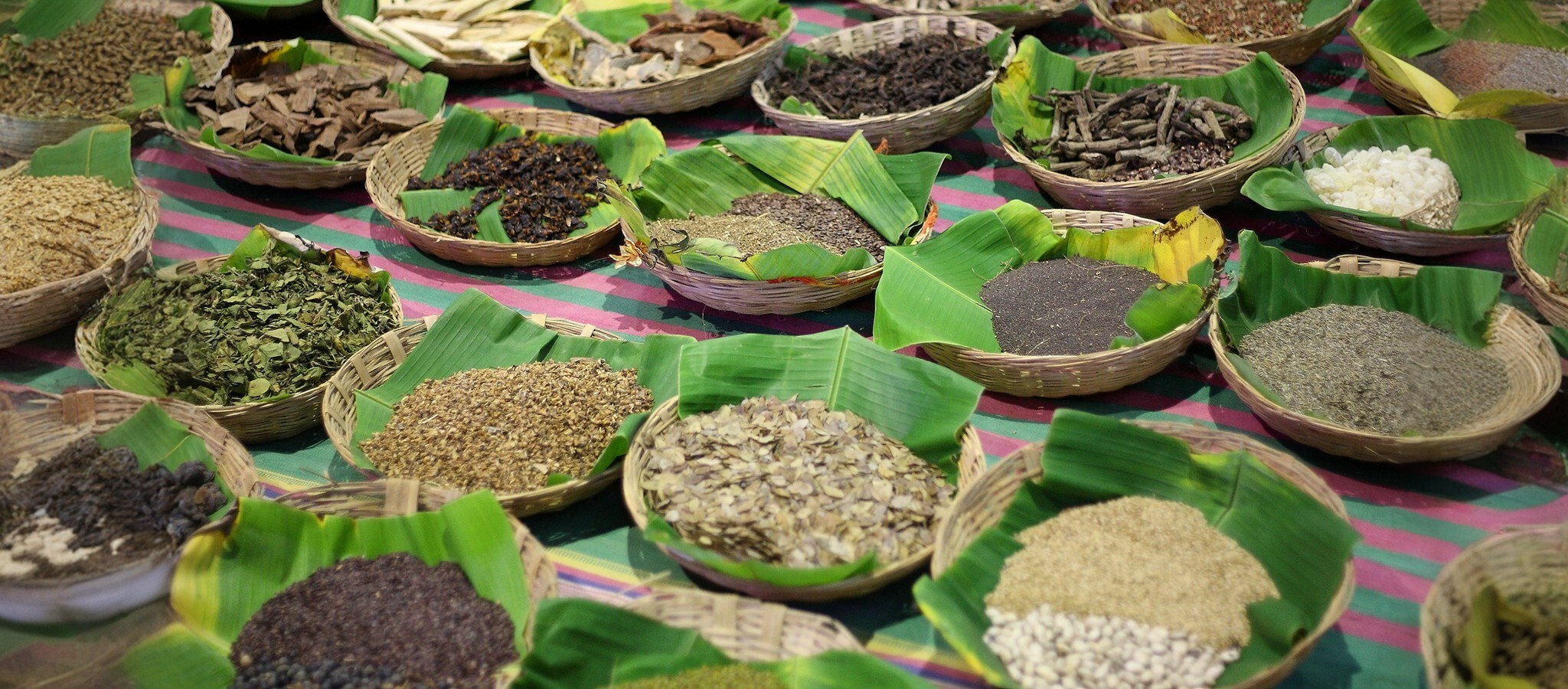
Have you heard about the Butterfly Effect? One butterfly fluttering its wings in South America has an impact on the movement of clouds in China. That shows how powerful every single move of beings could be on everything else around them. The ancient people knew the connection between the macrocosm and the microcosm, and the parts of our body. The cosmos, the planets, the cosmic rays, and the vibration are connected to a particular bird, particular grain, herb or particular part of your human body. Navaratri is the time to explore this deep connection.
The Science Behind the Rituals
YAGYAS – a science of bringing the unmanifest energy into the manifest world
With yagya and tapas, one attains the highest Self. Yagya includes three elements: Dev puja – honouring the diverse divine qualities and energies. Each has a particular quality or use, and these are connected with different mantras, and herbs. Different plants are assigned to a particular vibration and definite energy, and so they express the unmanifest divinity. Every animal, for example, radiates a particular energy. Sangatikaran –everyone moving together. Yagya cannot happen alone because we are connected with everybody. If one is affected, in some degree it will affect others too; and daan – giving, sharing.
The yagyas, through different mantras, enlivens specific qualities in our consciousness. Specific yagyas with specific mantras have a specific influence on us, on our environment, on our collective consciousness, collective mind and individual mind.
Lord Krishna says – in the world, the yagyas are performed because they quickly produce beneficial results.
In yagya, the first thing is they sow all the different types of seeds. The life in the seed, though it has prana all the time, is manifested only when it sprouts. Similarly, Yagya is done by creating prana all around the mantap. The seeds sprout and they bring the prana shakti down from the space element. On the last day, the end of the ceremony, everyone dances around the sprouts, celebrating life, washed in the high prana. So the through the yagya – the prana is invoked in the water, fire, earth, in all the five elements; and then you see the bliss sprouting in the whole atmosphere with all the chants, bhajans, music and dance.
IDOL DÉCOR – the philosophy behind
Your mind is attracted towards everything bright and colourful- the jewellery, clothing, flowers, and fragrance; so to arrest your senses, they put it all on the statue. When it is on the statue, you can’t possess it; so you have reverence for it. You stand in front of the deity and close your eyes; this indicates that God is within you. This is an arrangement to go inward.
Aarti
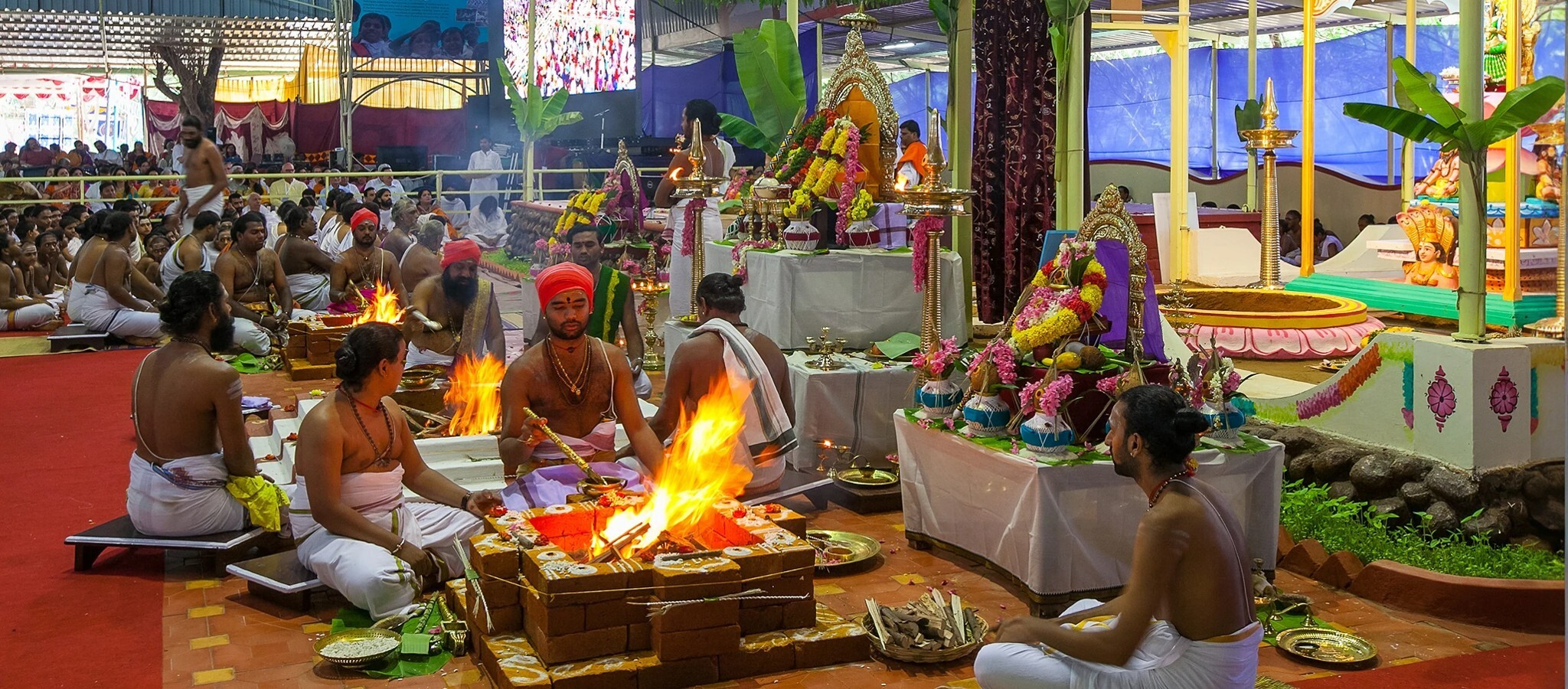
We pray – our life is like a lamp, and just like the lamp let my 5 senses, my life, move around you Mother Divine.
Tirtham
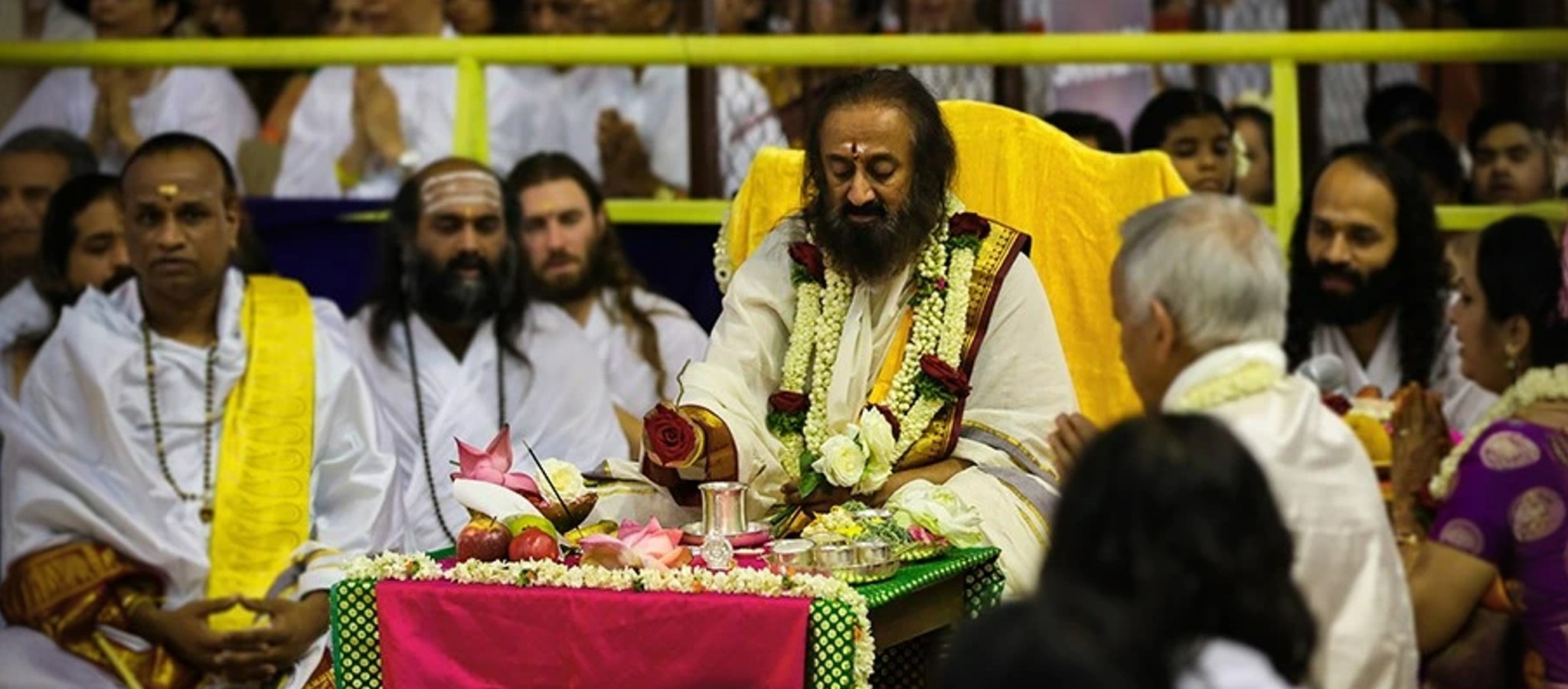
There is only one word in Sanskrit Apah for both water and love. When we take the tirtham, it means – I feel one with everybody. You take a little prasad and you feel content and happy.
Mantras: the Link between the Subtle and the Gross
Mantras are specific and powerful vibrations which are the link between the material and the subtle world. But unless it is connected with the spandan, the deeper vibrations of the self, they remain ineffective. So only those who are in deep samadhi can make the mantra powerful and fruitful; it’s important to experience nothingness for mantras to get charged. That is why whenever any yagya is done, they invite a Guru there who is in yoga, for in their presence only it fructifies.
You can feel a definite difference in the atmosphere when these big yagyas are happening, and mantra chanting is being done here by meditators. The meditators have practised meditation for years with their special mantras. This combination of chanting and meditation creates an environment where everyone can experience deep meditation and happiness. Even people who have never heard the mantras before, but if they have done good meditation, once they hear or sit there, they feel the vibration.
Mantras are the timeless seeds of existence, so the meaning of mantras is not as important as their vibration. So what one has to do is just enjoy the sound and its vibrations. When we recognize this whole universe is one vibration, then the mantras come to us. There is a natural affinity between that state of consciousness and mantras, and then they fructify.
Mantras are a way to heal, to fulfil wishes
Water absorbs the impact of mantras. A scientist in Japan has done a beautiful experiment on the impact of sounds on the water crystals and the water drops; and how when different mantras are chanted, the crystal formation of water is different. So, the mantras can bring the desired result.
In the material world, you need different materials to create different things; but that doesn’t apply in the field of mantra. Any mantra is good enough to bring whatever you desire to have as a result. So mantras transcend the division of material existence; that is why it is so close to the Absolute.
Sankalpa: the Significance, the Secret and the Science
Life cannot move without a direction, so you need to have a goal. So, in all the pujas we take sankalapa; sankalpa is – “at this point of time and space I take this intention,” and then you drop that intention.
The difference between an intention and desire is that in desire you are holding onto it, you become so feverish, and you lose all your energy in holding onto it.
The Rahasya is that the one who can drop the intention is the one whose sankalpa manifests.
Sankalpas come into the mind, and mantras energize the mind. The more thoughts you have, the weaker the sankalpa, and so the sankalpa does not fructify. With mantras, the mind gets energized and centered and in that energized state when a sankalpa is taken up, it is bound to fructify.
Meditation and Our Brain
Group meditation elevates the collective consciousness and uplifts the human spirit to be more creative and productive.
The researchers have found that if you meditate for even just 8 weeks or 2 months, the grey matter in the brain increases, it changes the structure of the brain. The brain becomes much more intuitive, creative, and vibrant.



